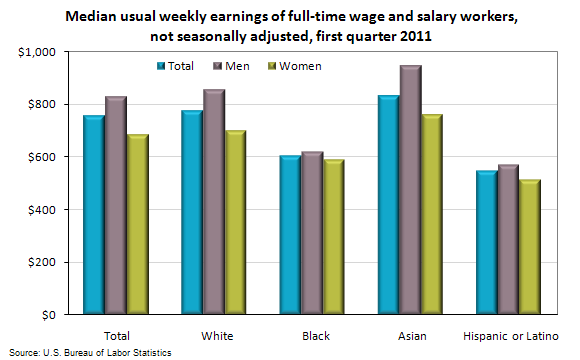Latinos, Blacks, and All Women Endure Lower Paychecks in the United States

Although Nelson Mandela highlights how the powers of money are limited, he also suggests that people struggle to be successful when they do not have access to work and economic opportunity. In the United States, the disparity of wealth among the people is a grim reality. It is particularly glaring when you look at the median income for people grouped by race and sex.
Women of every race made less than men. Those who usually worked full time had median earnings of $683 per week, or 82.4 percent of the $829 median for men. The female-to-male earnings ratio varied by race and ethnicity. White women earned 81.7 percent of their male counterparts, compared with black (95.0 percent), Asian (80.4 percent), and Hispanic women (90.4 percent). Although the gap between black men and women’s salaries is not as gaping as within other workers of other races, this figure may say more about the staggering degree of discrimination against black men than lack of sexism against black women.
Latinos in the United States are having the hardest time making enough money. Overall, median weekly of Latinos who worked full time received $549 every week. Compare this figure to the $856 of white men.
The median weekly earnings of the nation’s 98.3 million full-time wage and salary workers ($755 in the first quarter of 2011) were 0.1 percent higher than a year earlier, compared with a gain of 2.1 percent in the Consumer Price Index for All Urban Consumers (CPI-U) over the same period.


